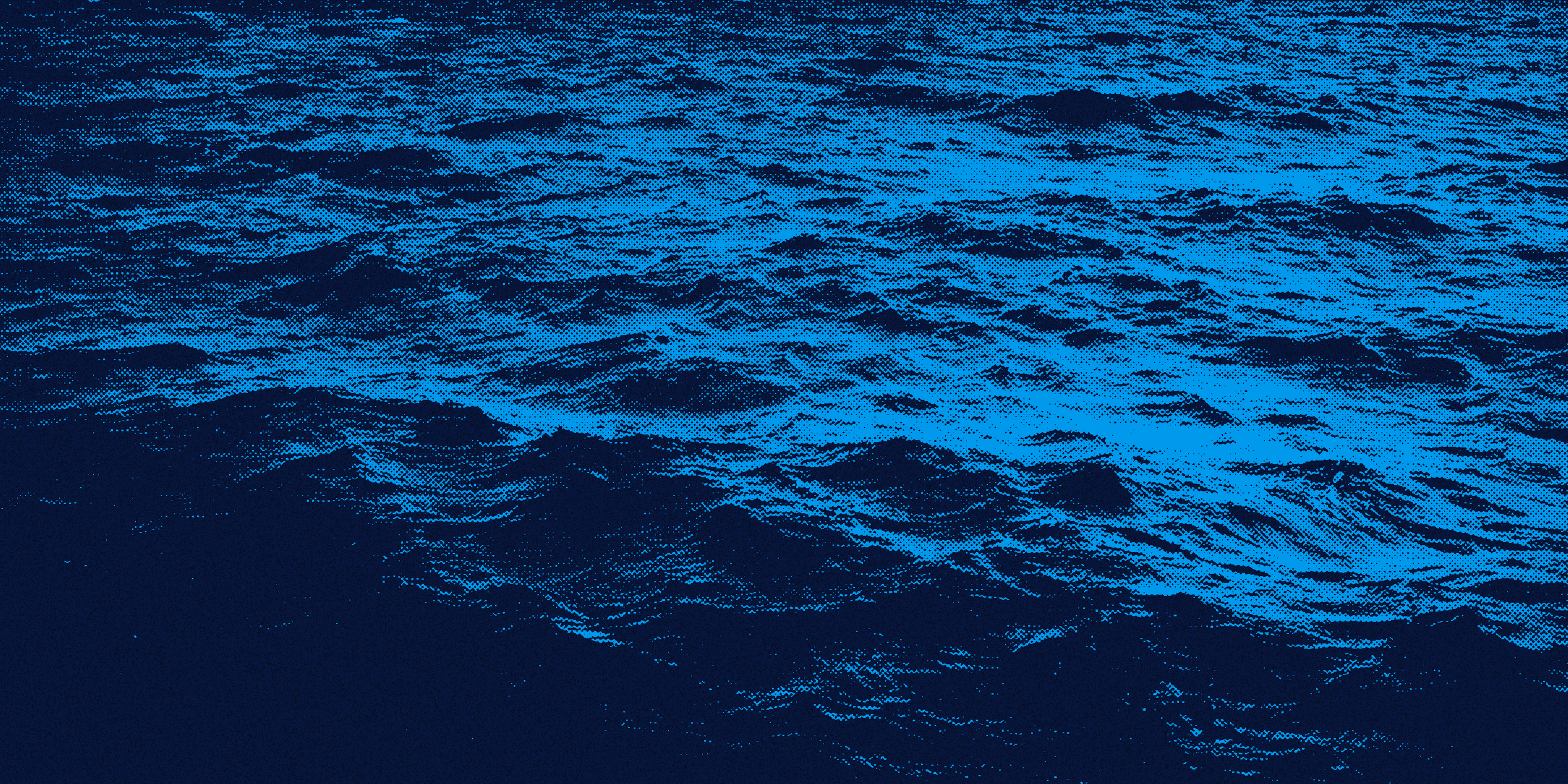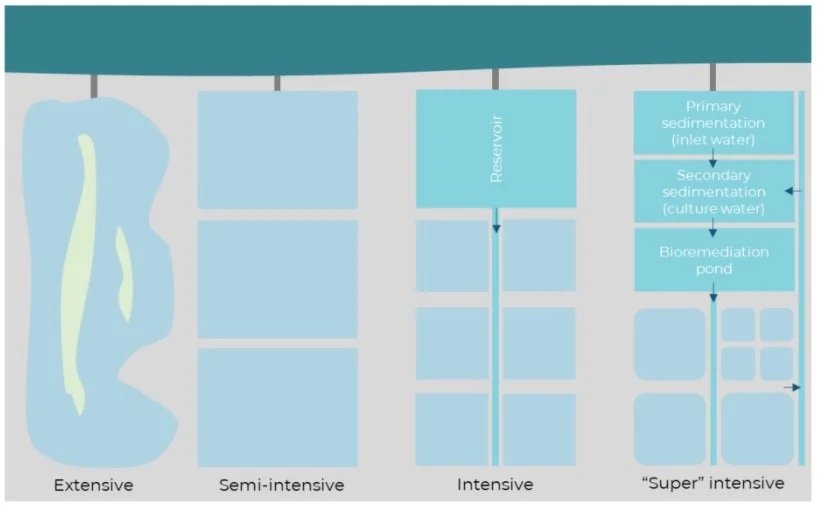
The Shrimp Supply Chain
What is the journey for a farmed shrimp, from birth to slaughter, to plate?
This article will detail all stages of the shrimp supply chain, from Inputs, to Farming, to Trading, to Processing, to Exporting/Importing, and finally Distribution.
Inputs
Shrimps are either caught in the wild or bred in hatcheries, then transported to the farm.
Wild Post-Larvae (PL) - PL refers to fully grown shrimps who have grown past their larval stage. In some countries, PL are caught from the wild by specialised fishers during peak seasons and sold to farmers.
Broodstock - This refers to shrimps that have been conditioned to ensure they produce the maximum number of fry (baby shrimps). Some countries import their broodstock, while some have their own hatcheries (and some do both).
Hatcheries - Many countries have professional hatcheries where broodstock are kept and bred. On a daily basis, the shrimps that have eggs are selected and taken to ‘de-egging’ tanks, where the eggs are removed, cleaned, treated and stocked in plastic boxes. After hatching, larvae are often placed in incubators to increase survival rate for around 15-21 days. Some countries have separate Nurseries where the fry are transported to and nursed until they can be sold.
Transport (to farm) - Transport to nurseries or farms is typically done by road or, in remote areas, by boat. Shrimps are packed in oxygenated bags. The mortality rate during transport can be high.
Feed - The most common types of feeds are nursery, grower and finisher feeds. It can be purchased from local feed companies, often supplied as pellets that contain fish meal (fish byproducts or bycatch), grains and additives, but can also include corn, soybean, squid liver, binding agents, as well as artemia and crumble feed. Feed is often balanced for different life stages.
Chemicals and Medicines - Several drugs, such as probiotics, are used to prevent or treat disease outbreaks. Many unlicensed manufacturers however can be found on the market. Antibiotic use in Aquaculture is banned in the US and EU, however they are still used in many countries that export to these countries. Additionally some chemical fertilizers are used to stimulate algae growth in ponds. Sometimes entire containers of imported shrimps are rejected due to food safety inspections due to the use of antibiotics.
Farming
Also known as Aquaculture, shrimps grow for three to six months before slaughter.
Farms range from small-scale family enterprises to large corporations. Individual ponds range between 0.2 to 1.6 hectares, but multiple ponds next to each other can create farms that exceed 70 hectares.
In most polyculture (more than one species) systems, shrimps eat the excess feeds and waste produced by the fish. Monoculture (shrimps only) farms tend to use pellet feeds 3 to 4 times a day.
Trading
Shrimps are harvested and transported to factories, often with the help of intermediaries.
Harvest - Shrimps are harvested when they are around three to six months old. Small farms harvest manually by using nets (known as a seine), or by forcing shrimps to leave the pond through a gate and trapping them. Bigger farmers use mechanical systems to lift the shrimps onshore. Alternatively, the pond is drained, and the shrimps are then collected in nets. Once onshore, they are put in plastic boxes with ice slurry (water and ice) where shrimps face a slow death.
Transport (to factory) - As with the transport to farms, this depends on location, but in most cases the boxes of shrimps are transported by truck. Though in some cases this can be by boat. Typically, factories arrange transport while farmers arrange the harvest.
Agents - Many small scale farmers (especially geographically isolated farmers) don’t work directly with processing factories and instead work with intermediaries, agents and traders. They provide financial or other services (such as collecting, auctioning or transport) to farmers and assist factories with grading shrimps, pre-processing and transporting.
Many thanks to Fresh Studio for providing this illustration of the different farming production models.
Extensive - These farms are small-scale, ranging from three to five hectares, stocking 4-6 shrimps per square metre and harvesting 300-450kgs of shrimps per hectare. They typically use a natural tide to restock water and bring in feed. Extensive farming is seasonal based on the natural life cycles of shrimps.
Semi-intensive - These farms have higher stocking rates than Extensive farms, stocking 20-60 shrimps per square metre and harvesting 9-12 tonnes of shrimps per hectare per year. Rather than relying on wild seedlings as in Extensive farming, Semi-Intensive farms use captive breeding to produce new shrimps.
Intensive - These farms have higher stocking rates than Semi-Intensive farms, stocking 60-200 shrimps per square metre and harvesting 6-15 tonnes of shrimps per hectare per year. Intensive farming is practiced by both individual households and corporate farms, with corporate farms ranging up to 1000 hectares in size.
Super-intensive - These farms have the highest stocking rates of shrimps, stocking 200-500 shrimps per square metre, and harvesting between 40-80 tonnes of shrimps per hectare per crop. This type of farming is practiced by vertically integrated companies and farms are completely isolated from surroundings, with ponds/tanks located in a greenhouse.
Processing
At processing plants, shrimps are assessed, classified, processed, bagged and frozen.
Fully integrated producers (i.e. producers who own every step of production) often dominate the processing sector. On arrival at the processing plant, shrimps are washed and cleaned. Antioxidant products to prevent melanization are also applied at this stage. They are then assessed for colour and quality and then classified (either by hand or machine). The shrimps may then be further processed, i.e. via peeling, deheading, deveining, cutting or precooking. Once they have been processed this way, they are packed in bags and boxes and then frozen, ready for export.
Exporting
Shrimps are inspected, certified, and then transported by truck to sea and land ports.
Certifications - Shrimps are commonly kept in cold storage for final quality inspection, often to meet the requirements of buyers and legal regulations, such as Health Certificates, which accompany the shipment to its destination. If loaded into containers at the processing plant, then customs formalities are handled here.
Transport (to ports) - Once shrimps are ready they are packed into containers and then transported on cooler trucks to sea and land ports. If loaded into containers at the port, then customs formalities are handled here.
Agents - Many countries and buyers use agents who negotiate contracts, perform quality control at the processing plants (and where the containers are packed) and coordinate the purchase of shrimps from various suppliers.
Importing
Imported shrimps are checked and transported to the buyer's location.
Importers are often large companies that buy shrimps in vast quantities. On arriving in the country, the certifications accompanying the shrimps are checked, and some may be taken for testing purposes by the countries authorities. Shrimps are then transported to the buyer’s location for final redistribution.
Distribution
Once in the import country, shrimps are redistributed in various ways to the end consumer.
Once the shrimps are with the buyer, shrimps are redistributed by distributors, such as:
Food manufacturers producing various processed and frozen foods;
Retailers who sell the shrimps to consumers;
Food service providers (such as restaurants);
Through own brands directly to consumers and retailers.
Many thanks to Seafood TIP and Fresh Studio for providing our understanding of the supply chain.

